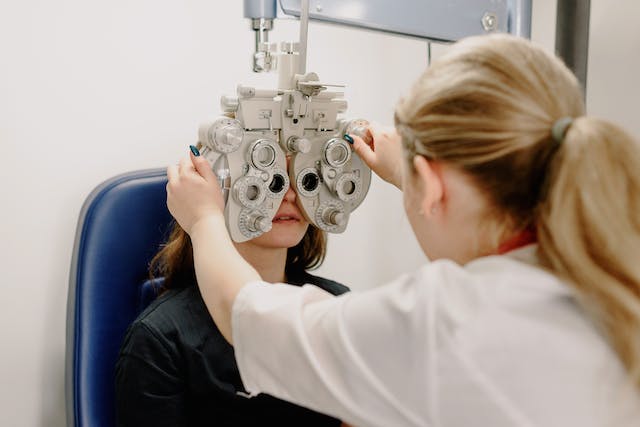In a world where technology continues to advance at a rapid pace, the options for vision correction have expanded far beyond traditional eyeglasses. Contact lenses provide a convenient and comfortable alternative, offering wearers the freedom to see clearly without the hindrance of frames. However, before diving into the world of contact lenses, it is crucial to undergo a comprehensive contact lens eye exam. In this blog post, we will explore the significance of such examinations and why they are essential for maintaining optimal eye health.
Section 1: The Basics of Contact Lenses Before delving into the specifics of a contact lens eye exam, let’s briefly touch upon the basics of contact lenses. These tiny, prescription lenses are placed directly on the surface of the eye to correct vision problems such as nearsightedness, farsightedness, and astigmatism. Unlike eyeglasses, contact lenses move with your eyes, providing a more natural field of vision.
Section 2: The Need for a Contact Lens Eye Exam A contact lens eye exam is not your typical eye examination for glasses. It is a specialized process that takes into account factors unique to contact lens wear. Here’s why it’s crucial:
a. Prescription Accuracy: Contact lenses come in various materials and designs. An accurate prescription ensures that your contact lenses provide the right amount of correction for your eyes.
b. Eye Health Evaluation: Contact lenses are worn directly on the eye’s surface, making it essential to assess the overall health of your eyes. The exam includes checks for any signs of infections, dryness, or other conditions that might affect your ability to wear contact lenses comfortably.
c. Fitting Assessment: Proper fit is paramount when it comes to contact lenses. Ill-fitting lenses can cause discomfort, blurry vision, and even damage to the cornea. During the exam, the optometrist measures the curvature and size of your eyes to ensure a snug and comfortable fit.
Section 3: The Exam Process A contact lens eye exam typically involves several steps:
a. Visual Acuity Test: Similar to a regular eye exam, this test determines the sharpness of your vision at various distances.
b. Tear Film Evaluation: The optometrist assesses the quantity and quality of your tears, as adequate tear production is essential for comfortable contact lens wear.
c. Corneal Measurement: The curvature and size of your cornea are measured to determine the appropriate contact lens parameters.
d. Trial Lenses: In some cases, trial lenses may be used to assess the comfort and effectiveness of a particular contact lens brand or type.
Section 4: The Importance of Follow-Up Visits Once you have been fitted with contact lenses, it is crucial to attend follow-up visits as recommended by your optometrist. These visits allow for ongoing assessment of your eye health, prescription accuracy, and the performance of your contact lenses.
